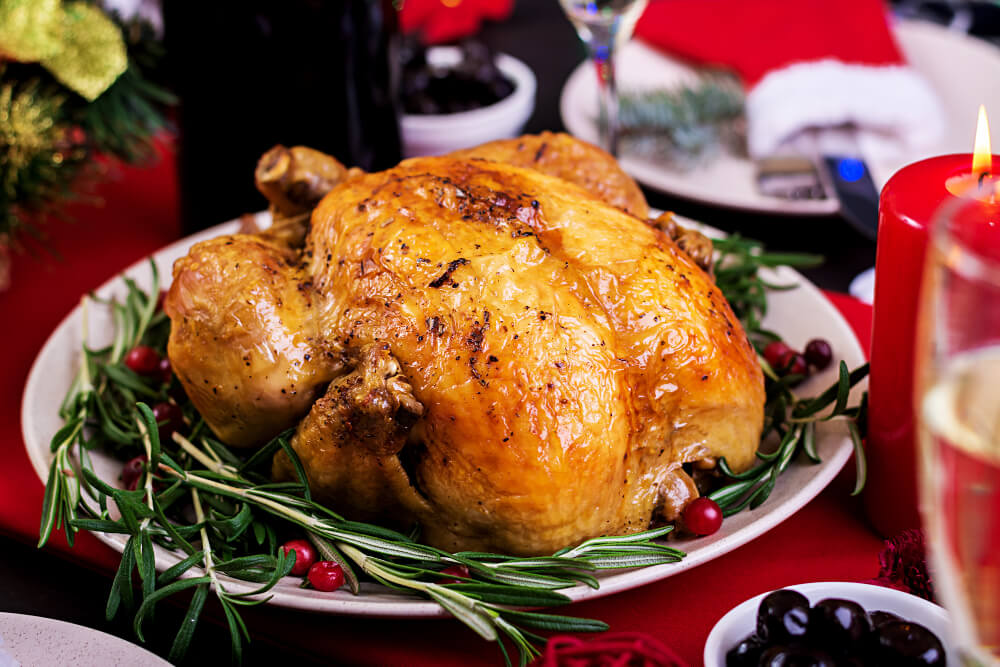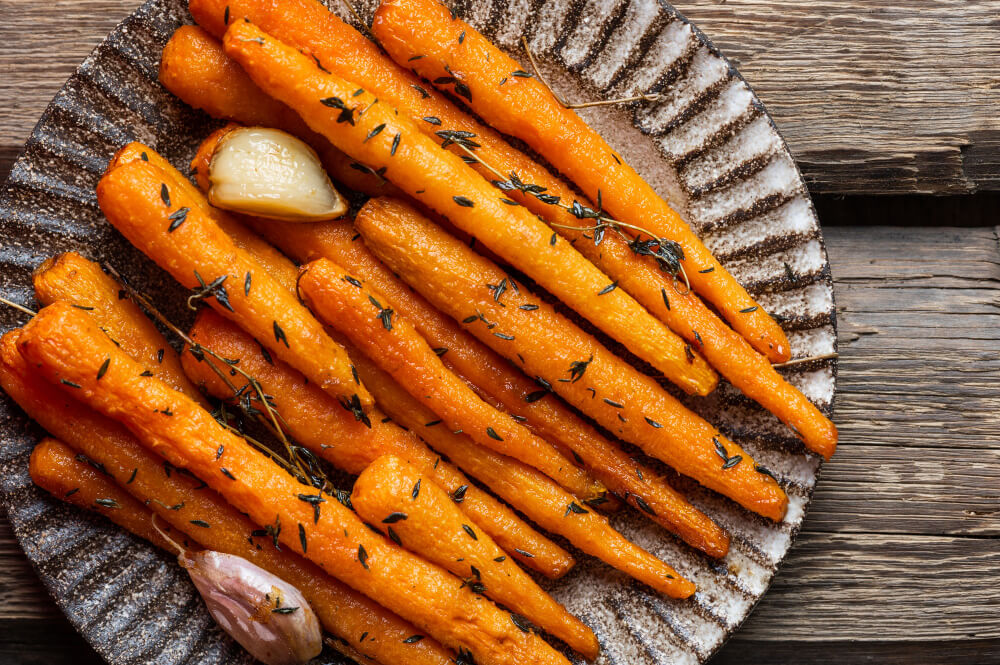
Hey there, bacon lovers! We all know that bacon is a delicious and versatile breakfast staple, but what if I told you there's a fantastic way to cook bacon that you might not have tried yet? That's right, today we're exploring how to cook bacon in a stainless steel pan! You might have already heard about cooking bacon in the oven or using a skillet, cast iron, or nonstick pan. But trust me, this method is just as scrumptious and worth a try!
Imagine waking up to the mouthwatering aroma of perfectly crispy bacon without having to deal with messy splatter or stubbornly stuck-on fat. With just a stainless steel pan, parchment paper, and a baking sheet, you can make this dream a reality.
So, if you're ready to level up your bacon game and learn how to make the crispiest, most delectable bacon with minimal mess, then keep reading! You'll soon find out that cooking bacon in a stainless steel pan is not just an alternative; it's a game-changer.
Step-by-Step Guide on Cooking Bacon in Stainless Steel Pan
Now to the exciting part - cooking that delicious bacon in a stainless steel pan! Here's a step-by-step guide to help you achieve perfect bacon every time. With this cooking method, you'll enjoy a hassle-free experience and an impressive result. So, let's get started!
-
Preheat the pan: Before adding the bacon to the pan, preheat it over medium heat. Waiting until your pan is adequately heated helps ensure that your bacon cooks evenly and prevents it from sticking to the bottom of the pan.
-
Start with a cold pan: Contrary to most cooking methods, starting with a cold pan can actually help the bacon fat render more efficiently. This will not only give you a perfect bacon strip but also make cleanup easier.
-
Add cooking oil: Although bacon has its own fat, adding a small amount of cooking oil to the steel pan is a great way to prevent the bacon from sticking to the pan. Just a thin layer will do the trick!
-
Place the bacon on the stovetop: Gently lay each strip of bacon onto the pan, making sure they don't overlap. This allows the bacon to cook evenly and prevents any undercooked areas.
-
Season (optional): If you want to add some extra flavor to your bacon, feel free to season it with your favorite herbs or spices. However, be cautious with salt, as bacon is already quite salty.
-
Cook the bacon: Allow the bacon to cook for a few minutes on one side before flipping it. As the bacon cooks, you'll notice the bacon grease starting to accumulate in the pan. This will help the bacon fat render and create that irresistible crispiness we all love.
-
Monitor the heat: Keep an eye on the heat during the cooking process. If the pan gets too hot, it may cause the bacon to burn. Adjust the heat as needed to ensure that your bacon is cooked to perfection.
-
Flip and cook the other side: Once one side of the bacon strip is golden and crispy, use tongs or a fork to flip it over. Cook the other side until it reaches your desired level of crispiness.
-
Drain the bacon: When the bacon is done cooking, use tongs or a fork to remove it from the pan and place it on a plate lined with paper towels. This will absorb any excess grease and help keep your kitchen clean.
-
Cleanup: After you've enjoyed your perfectly cooked bacon, don't forget to clean up the pan. Allow the bacon grease to cool slightly before wiping it out with a paper towel. Then, wash the pan with warm, soapy water to remove any remaining residue.
With these steps in mind, cooking bacon in a stainless steel pan will become your new favorite kitchen hack. Not only does this method produce perfect bacon every time, but it also makes cleanup a breeze.
Advantages of Cooking Bacon in a Stainless Steel Pan

There are several advantages to cooking bacon in a stainless steel pan that make it an excellent choice for bacon enthusiasts. When you place the bacon strips in a properly seasoned stainless steel pan, you'll find that it offers several benefits over other types of cookware:
-
Even cooking: A stainless steel pan distributes heat evenly across its surface, allowing your food to cook consistently. This ensures that when you lay the bacon in the pan in a single layer, each strip will cook uniformly, giving you perfectly crispy bacon every time.
-
Less sticking: Although stainless steel pans can sometimes cause food to stick, when the pan is properly seasoned and preheated, it creates a natural non-stick surface. This makes it much less likely for the bacon to stick to the pan, ensuring that your bacon strips come out intact and looking delicious.
-
Durability: Stainless steel pans are known for their durability, which means they can withstand high heat and resist warping or damage over time. This makes them a reliable choice when you need a pan that can handle the heat and weight of cooking bacon.
-
Easy to clean: Cooking bacon in a stainless steel pan also makes cleanup a breeze. Once you've finished cooking and the grease has cooled, simply use a paper towel to wipe away any excess fat. Then, wash the pan with warm, soapy water and a soft sponge, avoiding the need for vigorous scrubbing.
-
Versatility: Stainless steel pans are not only great for cooking bacon but also for a wide variety of other dishes. This means that when you choose to use a stainless steel pan for your bacon, you're investing in a versatile piece of cookware that will serve you well in the kitchen.
-
Aesthetic appeal: Stainless steel pans have a sleek, modern look that many home cooks appreciate. Cooking your bacon in a stainless steel pan not only gives you delicious results, but it also adds a touch of elegance to your kitchen.
To sum up, cooking bacon in a stainless steel pan offers several benefits, including even heat distribution, reduced sticking, durability, easy cleanup, versatility, and aesthetic appeal. So, the next time you're craving a mouthwatering bacon strip, give a stainless steel pan a try – you won't be disappointed!
Tips on How to Make Your Bacon Crispy
Crispy bacon is a favorite for many, and while the best method for achieving that perfect crunch may vary, here are some tips to help you make your bacon as crispy as possible:
-
Use a pan with even heat distribution: As mentioned earlier, using a stainless steel pan is a great option for even heat distribution, which helps your bacon cook more evenly and achieve a crispy texture.
-
Start by preheating the pan: Preheating your pan before adding the bacon will ensure that it starts cooking immediately and crisps up quickly.
-
Use a spatula or tongs to turn the bacon: Turning the bacon frequently using a spatula or tongs will help it cook evenly and become crispy on both sides.
-
Cook at a lower temperature: Cooking bacon at a slightly lower temperature for a longer time, around 15-20 minutes, will allow it to become crispy without burning.
-
Drain the grease: As the bacon cooks, use a paper towel or a rack to drain the excess grease. This will help the bacon become crispy instead of greasy.
Should You Cook Bacon in Water?
Cooking bacon in water may sound unusual, but it's a technique some chefs swear by. The idea behind this method is that the water will render the fat more slowly, allowing the bacon to cook evenly without burning. Here's a quick and easy way to try cooking bacon in water:
-
Start with cold bacon: Place the bacon in a single layer in a pan, preferably one with a nonstick surface or a stainless steel pan that's less likely to stick.
-
Add water: Pour just enough water into the pan to cover the bacon. This water will help the bacon cook more evenly and prevent it from burning.
-
Cook at a low temperature: Place the pan over medium-low heat and allow the water to slowly come to a simmer. As the water evaporates, the bacon will begin to cook in its own fat, becoming crispy and brown.
-
Turn the bacon: Use tongs to turn the bacon occasionally, ensuring that both sides cook evenly and achieve the desired crispiness.
-
Drain and serve: Once the bacon has reached your desired level of crispiness, remove it from the pan and drain it on a paper towel to absorb any excess grease.
While this method may not be for everyone, cooking bacon in water is a flavorful alternative that can also help prevent the bacon from sticking to the pan. So, if you're feeling adventurous and want to try something new, give this technique a try and see if it becomes your new favorite way to cook bacon!
Conclusion
Cooking bacon in a stainless steel pan is a game-changer that can produce perfectly crispy bacon with minimal mess. By following a few simple steps, you can enjoy hassle-free cooking and cleaning while achieving mouthwatering results. Cooking bacon in a stainless steel pan offers several advantages, including even heat distribution, reduced sticking, durability, easy cleanup, versatility, and aesthetic appeal.
To make your bacon crispy, use a pan with even heat distribution, preheat it before adding the bacon, turn the bacon frequently, cook at a lower temperature, and drain the grease. Give cooking bacon in water a try for a flavorful alternative that can also prevent sticking.
Related Articles
- How to Season Cast Iron Without Oven?
- How to Season Cast Iron With Olive Oil
- Cast Iron vs Stainless Steel: Kitchen Cookware Guide
Related Products You Might Like
Aside from using a stainless steel pan, wooden cutting boards are also a great addition to your kitchen. At Mevell, we offer a wide range of beautifully crafted wooden cutting boards that are perfect for preparing your favorite meals.
Our cutting boards are made from high-quality, sustainably sourced wood and are designed to be durable, easy to clean, and gentle on your knives. Whether you're a professional chef or a home cook, our cutting boards will make your cooking experience more enjoyable and efficient.
Check out our website to browse our selection and find the perfect wooden cutting board for your kitchen.



